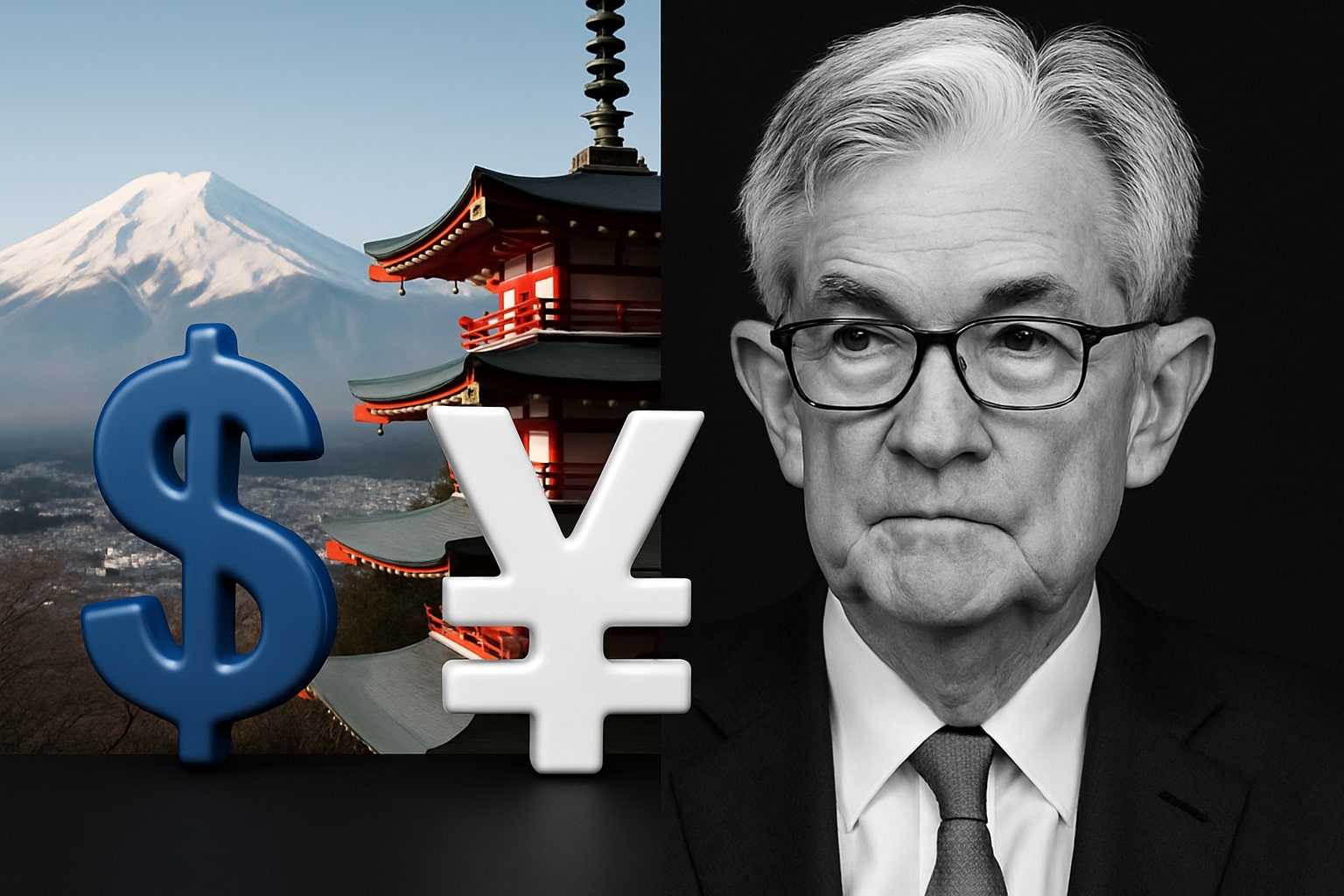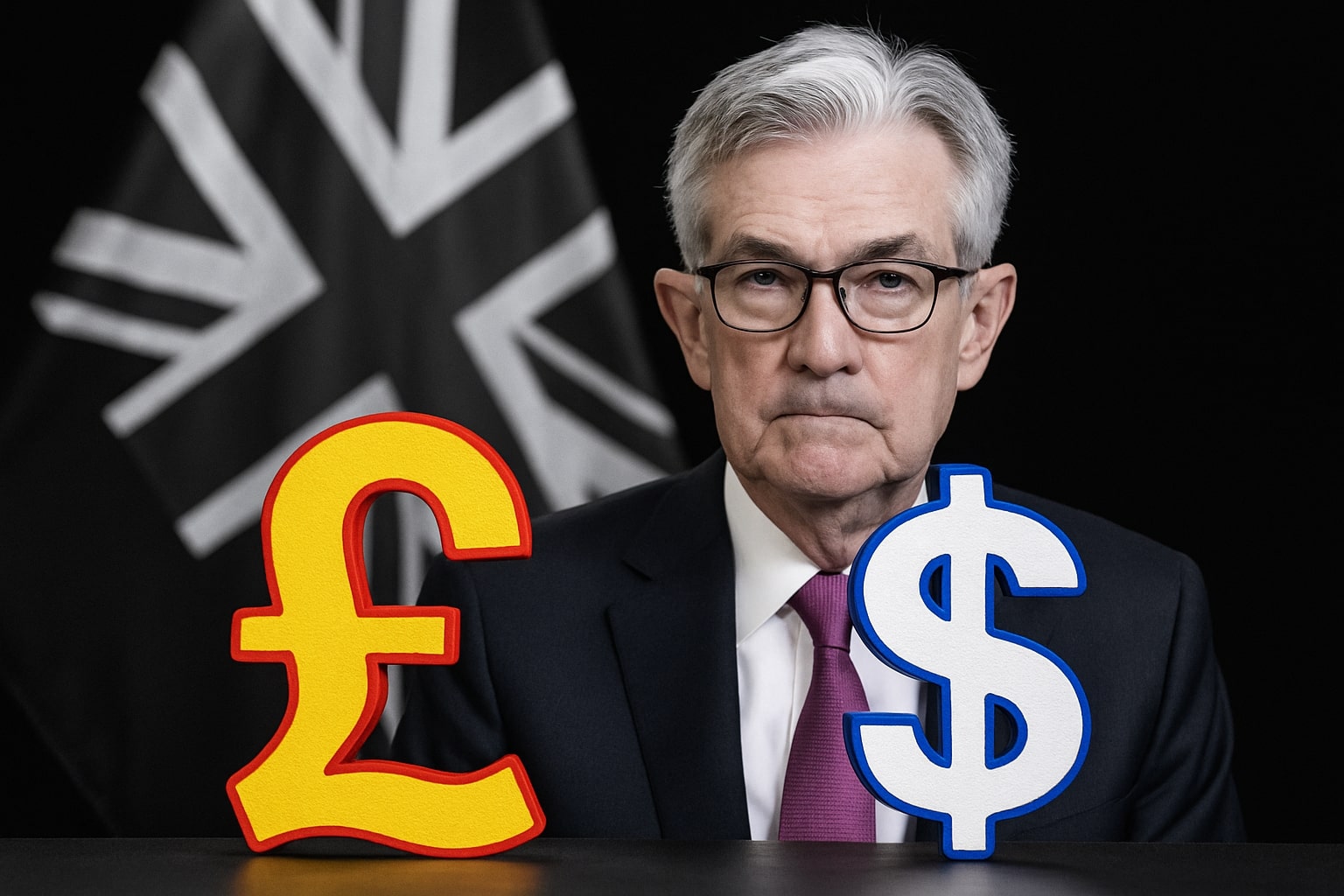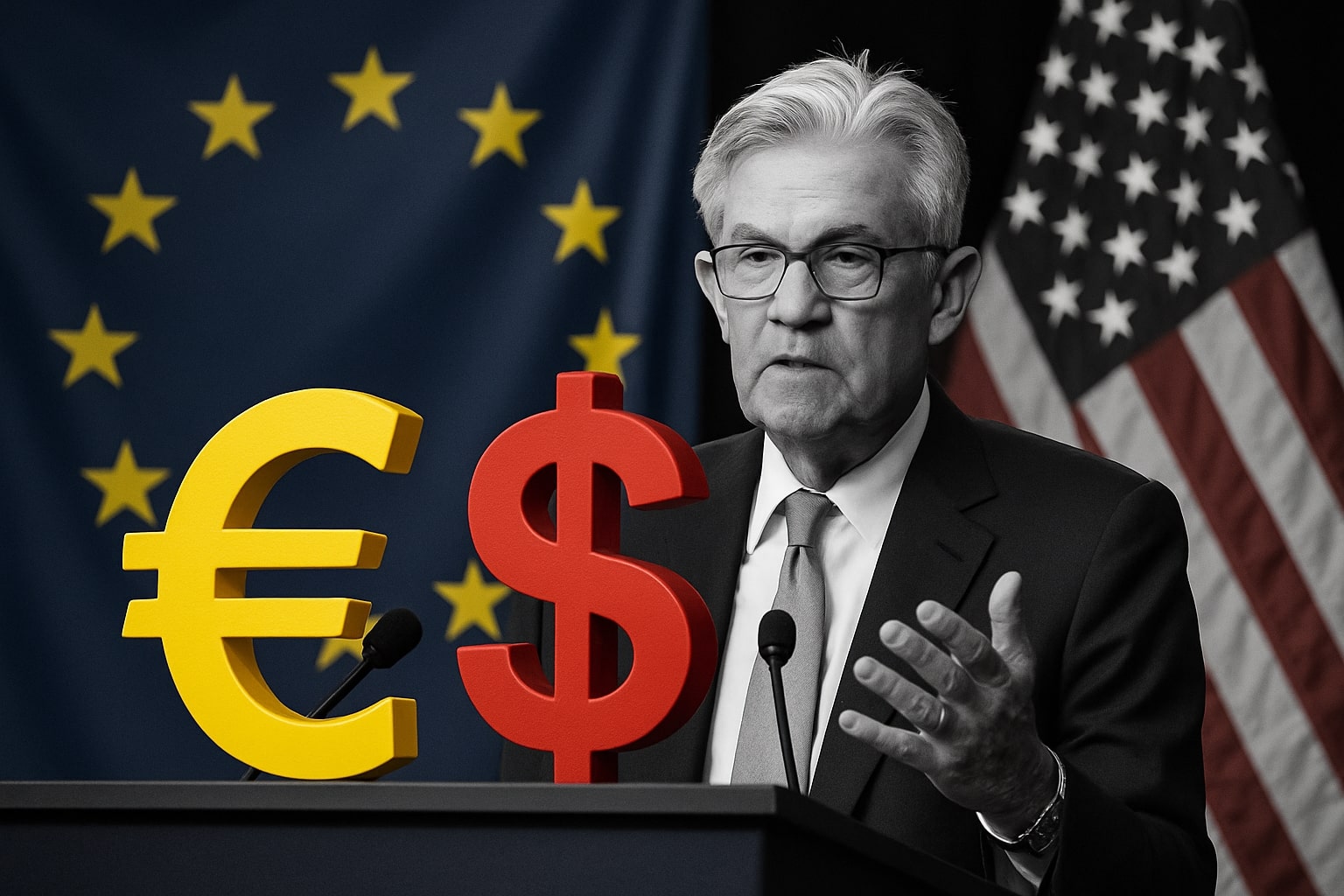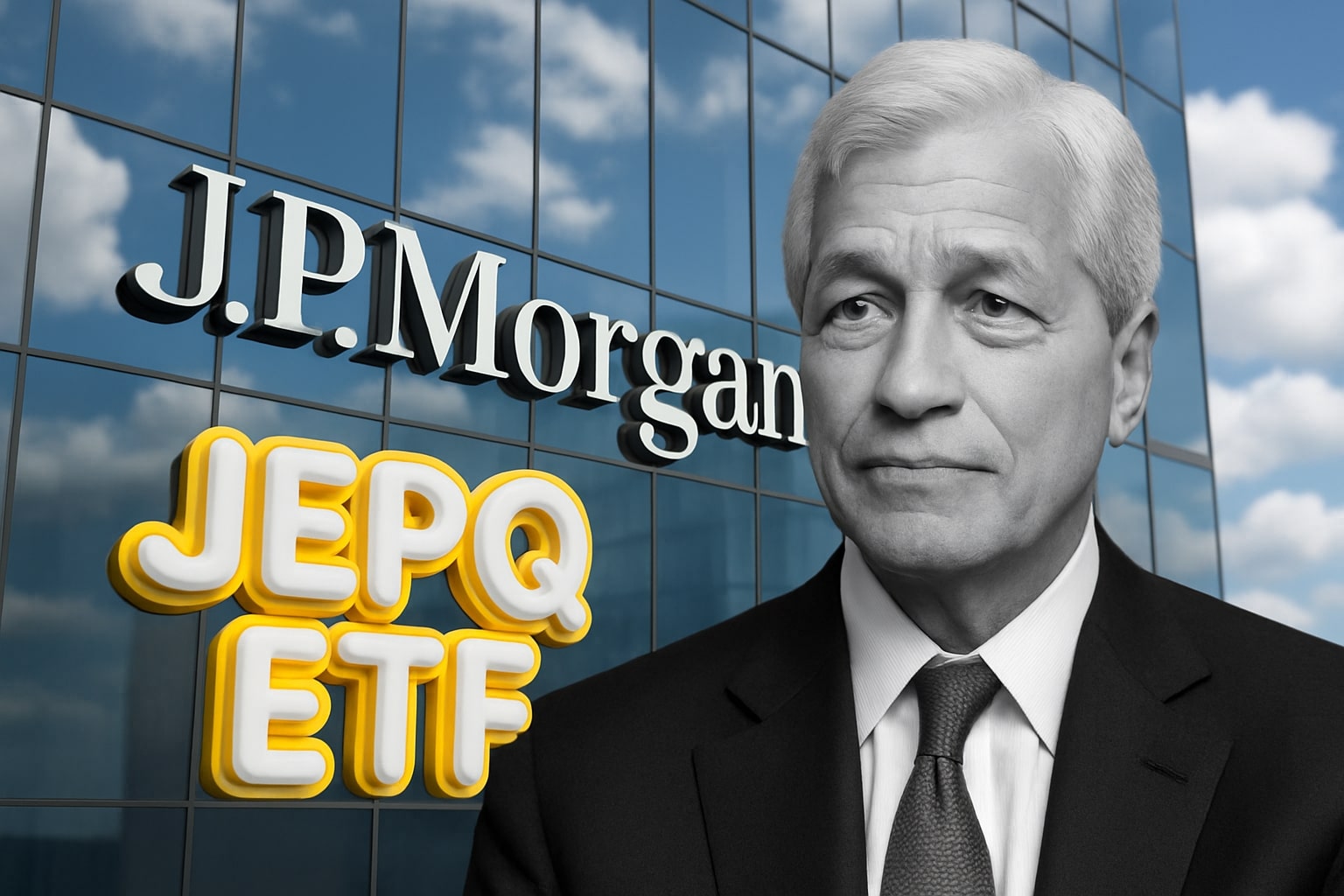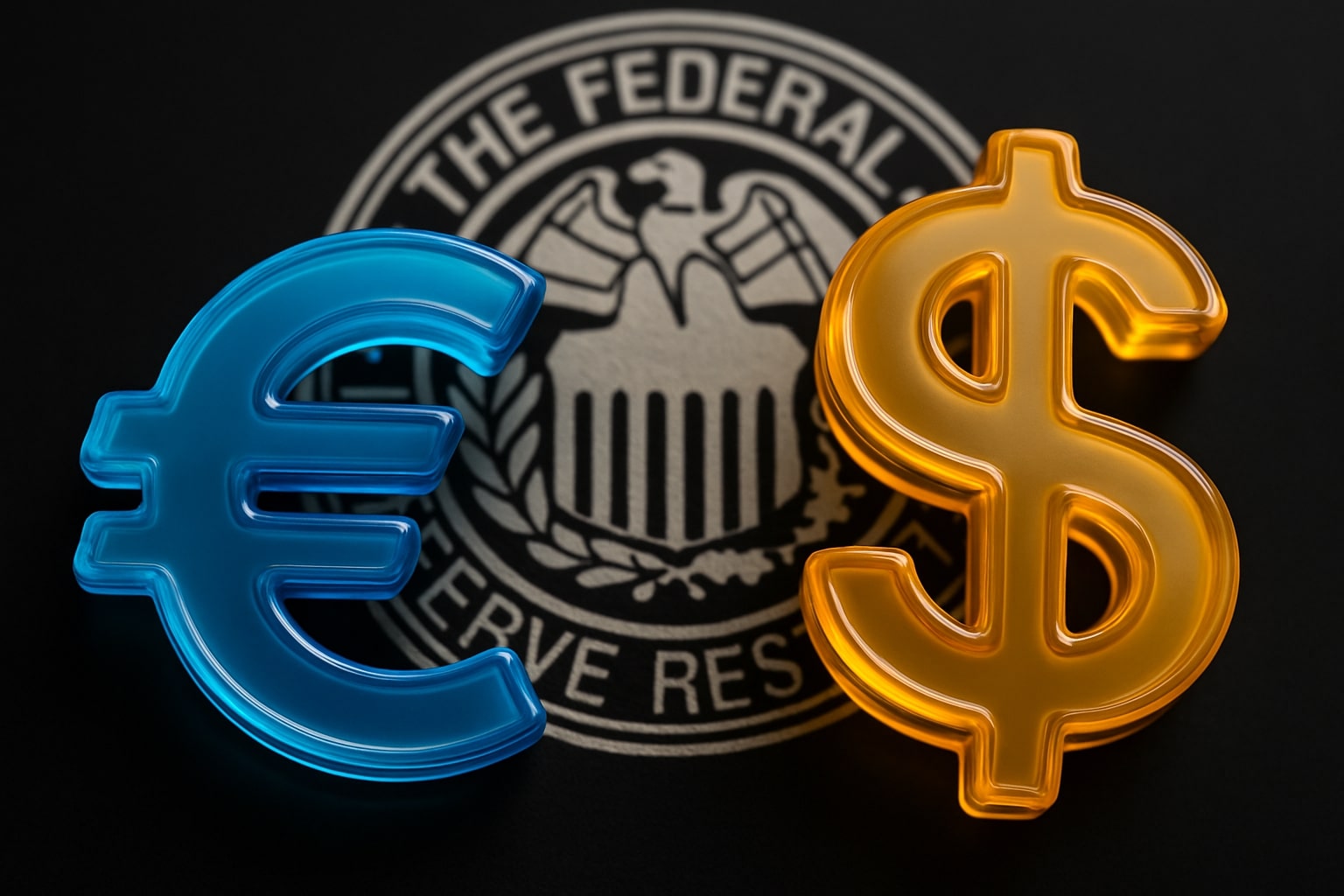
EUR/USD Price Forecast - EURO to DOLLAR Climbs to 1.1606 as Dollar Falls
Trump’s 100% China tariff and a weakening DXY at 98.87 drive the euro’s rebound, while Fed cut bets surge to 94% and France stabilizes after Lecornu’s reappointment | That's TradingNEWS
EUR/USD Rebounds to 1.1606 as Trade War Fears Shake the Dollar
The EUR/USD pair has regained ground, climbing to 1.1606, up 0.37%, after four consecutive sessions of losses driven by global risk aversion. The rebound came as the U.S. dollar weakened sharply following renewed tariff threats from Donald Trump, who announced a “massive increase” in duties on Chinese imports set to take effect on November 1, 2025. The move reignited the U.S.–China trade war, sending investors rushing into safer assets and allowing the euro to recover from its two-month low of 1.154. The Dollar Index (DXY), which measures the greenback against six major currencies, slipped 0.52% to 98.87, marking its sharpest weekly fall since July.
Dollar Pressure Mounts as Political Instability Sweeps Europe and Japan
The dollar’s earlier strength, which had lifted the DXY nearly 1.7% earlier in the week, began to unravel amid growing geopolitical anxiety. In France, President Emmanuel Macron reappointed Sébastien Lecornu as Prime Minister just days after his resignation triggered a government crisis. Lecornu vowed to restore stability and pass the 2026 budget, temporarily calming fears of a broader French political breakdown. However, investors remain cautious, remembering that parliamentary gridlock continues to haunt Macron’s administration. Across Asia, Japan’s leadership uncertainty has also added volatility to global FX markets, prompting traders to reassess risk exposure
Read More
-
JEPQ ETF Holds $58.82 as Fund Flows Cool and Nasdaq Valuations Stretch
06.12.2025 · TradingNEWS ArchiveStocks
-
XRP ETFs Cross $1 Billion AUM as XRPI and XRPR Lead Institutional Wave
06.12.2025 · TradingNEWS ArchiveCrypto
-
Natural Gas Price Breakout: NG=F Soars to $5.50 on Cold U.S. Weather & LNG Export Boom
06.12.2025 · TradingNEWS ArchiveCommodities
-
USD/JPY Price Forecast - Dollar to yen Slides to 155.60, BOJ Hike Reprice Global Currency Markets
06.12.2025 · TradingNEWS ArchiveForex
Trump’s Tariff Shock Redefines Global FX Flows
Trump’s renewed tariffs have become the central catalyst driving volatility across all major pairs. The 100% tariff proposal on Chinese goods sparked immediate reactions: equities tumbled, oil sank below $60 per barrel, and safe-haven flows surged into the euro and yen. The reactivation of tariff rhetoric reminded markets of the 2019 trade war episode, when the S&P 500 lost more than 6% in a single week, and the dollar followed a volatile but ultimately downward trajectory. Traders now expect prolonged global uncertainty, with volatility indices like the VIX projected to spike by more than 40% heading into November.
Consumer Confidence Data Becomes the Dollar’s Next Test
With the U.S. government still partially shut down, key economic indicators have been delayed, leaving markets desperate for fresh signals. The University of Michigan Consumer Sentiment Index for October came in at 55, slightly below September’s 55.1 and above expectations for 54.2, suggesting cautious resilience among consumers. Inflation expectations fell modestly, with one-year forecasts slipping from 4.7% to 4.6% and five-year expectations holding steady at 3.7%. Still, investors are concerned about the broader macro picture: deteriorating job growth, rising borrowing costs, and ongoing fiscal uncertainty could weigh on sentiment going into the Fed’s October 29 meeting, where markets are pricing a 94% chance of a 25-basis-point rate cut.
Euro Finds Relief After Political Turbulence but Faces Structural Challenges
The euro’s brief recovery reflects temporary relief rather than structural strength. The resignation and reappointment of Lecornu have stabilized headlines but not the underlying fiscal disarray in France. Traders see Macron’s centrist coalition struggling to push budgetary reforms through parliament, with rating agencies monitoring fiscal slippage risks closely. Meanwhile, Germany’s latest industrial production data showed a contraction of 0.3% month-on-month, underscoring that the eurozone’s economic rebound remains fragile. Despite this, European bond yields have fallen, providing short-term breathing room for the currency as traders position for a technical rebound toward the 1.166 resistance zone.
Technical Structure: EUR/USD Battles to Hold Above 1.1600
Technically, the pair’s price action reflects an attempt to consolidate after an extended decline. The break below the 100-day Simple Moving Average (SMA) at 1.1633 earlier in the week cemented a short-term bearish bias, but Friday’s recovery above 1.1600 signals that selling pressure may be easing. The Relative Strength Index (RSI) has climbed from 34 to near 50, suggesting momentum is stabilizing. Immediate support rests at 1.1550, followed by 1.1500, which aligns with the August swing low at 1.1391. Resistance lies at 1.1650 and 1.1700, with a break above the latter likely to target 1.1830, the July 1 high. The market’s bias remains cautious but shifting toward neutral as traders reassess the dollar’s vulnerability under tariff stress.
ECB’s Policy Stance Adds a Cushion for the Euro
The European Central Bank has largely paused its easing cycle, signaling that interest rates are near their terminal level unless inflation data softens dramatically. Minutes from the September meeting showed members divided but leaning toward maintaining current policy, with hawkish voices concerned about long-term price stability. The ECB now sees inflation risks as “balanced but fragile,” keeping the door open for adjustments if global trade tensions worsen. This stance contrasts with the Fed’s dovish tilt, creating a potential policy divergence that could lend support to the EUR/USD in the medium term.
Market Reaction and Broader Implications
The euro’s weekly trajectory reflects a textbook case of risk rotation. The pair initially tumbled 1.4%—its steepest weekly loss of 2025—before Friday’s tariff-driven rebound. Traders now watch whether the pair can sustain levels above 1.1600, which would indicate the beginning of a broader retracement phase. Across futures markets, speculative short positions on the euro have been reduced by 8%, suggesting early repositioning ahead of next week’s macro data. Meanwhile, the dollar’s retreat was mirrored by gold’s surge above $4,020, underlining how safe-haven demand is shifting away from U.S. assets as fiscal and political risk rise domestically.
Risk Sentiment and Global Spillover
The EUR/USD reaction also reflects wider investor sentiment about Europe’s political fragility and the U.S.’s economic overstretch. The French crisis has revived memories of the 2010–2012 debt turmoil, and traders fear that prolonged uncertainty could spill into bond markets. However, the reappointment of Lecornu offers a short-term reprieve, preventing a full-scale confidence collapse. On the U.S. side, the dollar’s safe-haven role is being challenged as investors increasingly hedge through the euro, yen, and gold rather than Treasuries.
Macro Forecast: Focus Shifts to CPI and Fed Decision
Markets now look to the U.S. CPI report due October 24, which is expected to show 0.3% month-on-month core inflation. A hotter print could briefly strengthen the dollar, but with growth indicators cooling and job data delayed, the Fed’s bias remains toward easing. Rate differentials between the U.S. and Europe are narrowing, further diminishing the dollar’s yield appeal. Should tariffs expand and recession fears deepen, the euro could regain momentum above 1.17, especially if European policymakers maintain stability while U.S. politics remain in turmoil.
Market Verdict: EUR/USD (1.1606) — Buy for Short-Term Recovery
After weeks of relentless selling, the EUR/USD pair shows the first signs of stabilization. Technical recovery, fading dollar momentum, and tariff-driven uncertainty all point to a potential bullish reversal into late October.
-
EUR/USD (1.1606) — Buy, short-term rebound toward 1.1700–1.1800; support 1.1550
-
DXY (98.87) — Neutral to Bearish; risk of extended downside toward 98.20
-
Gold (XAU/USD $4,020) — Bullish; safe-haven demand rising as dollar weakens
The euro’s rebound underscores a shift in global capital flows as investors hedge against U.S. political risk and trade war fallout. While volatility will remain elevated, the technical and macro backdrop now favors gradual euro appreciation, with a potential move toward 1.18 in the coming sessions if risk aversion persists.














